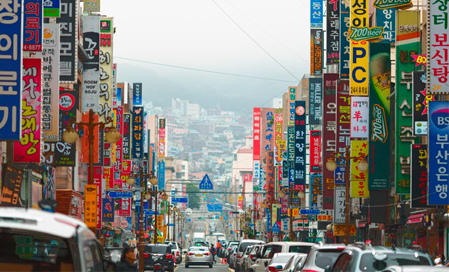El despegue de Corea del Sur hacia el desarrollo: El papel del capital humano y la productividad en el crecimiento económico, 1960-1979
Main Article Content
Keywords
Corea del Sur, crecimiento económico, capital humano, modelo de Solow, productividad
Resumen
Corea del Sur es un caso de impresionante crecimiento económico: un país previamente subdesarrollado que, después de la década de 1960, se embarcó en un proceso para lograr el desarrollo antes que otros países subdesarrollados. Corea del Sur también es un caso en el que los procesos de innovación pasan de la imitación a la auto-creación gracias a la capacidad de actualización rápida que los “mantiene al día”.
El viaje de Corea del Sur del subdesarrollo al desarrollo ha provocado un debate rico y bien fundado dentro de la teoría económica. Estos debates ponderan los roles de los factores productivos: trabajo, recursos, medio ambiente, al igual que del capital físico, humano, social y financiero; como de los agentes económicos (Estado, Empresas, Bancos) y de los factores del comercio internacional (IED, Importaciones, Exportaciones) en su proceso de crecimiento.
El argumento central de este artículo establece que el capital es la variable central que explica el resultado exitoso del milagro del crecimiento coreano. Sin embargo, conocer de qué se compone el capital es aún más importante. El impacto del capital humano en el proceso de crecimiento evidencia una sinergia con el desarrollo del conocimiento. Modificamos el modelo de Solow utilizando el capital humano, el capital físico y la productividad total de los factores como variables independientes en un modelo de regresión multivariable para el período entre 1960 y 1979 sobre la producción por trabajador. Concluimos que el capital humano y la productividad son tan importantes como el capital físico para explicar el crecimiento por trabajador en Corea del Sur debido a sus propiedades sinérgicas. El estudio se limita a los años anteriores del ascenso al poder de Park Chung-Hee y termina con su asesinato.
Descargas
Referencias
Berg, A. & Krueger, A. (2002). Dar vela al comercio. Revista Finanzas y Desarrollo, pp. 16-19.
Booth, A. (1998). Initial Conditions and Miraculous Growth: Why is South East Asia Different from Taiwan and South Korea? recovered from https://www.soas.ac.uk/economics/research/.../file28887.pdf.
Feenstra, Robert C., Robert Inklaar and Marcel P. Timmer (2015), "The Next Generation of the Penn World Table" American Economic Review, 105(10), 3150-3182, available for download at www.ggdc.net/pwt
Frank, C., Kim, Kwang Suk & Westphal, L. (1975). Foreign Trade regimes and Economic Development. Cambridge: NBER Editions.
García Blanch, F. (2001). An Empirical Inquiry into the Nature of South Korean Economic Growth. Center for International Development at Harvard University Working Papers, No. 74.
Harvie, C. (2006). Sources of Economic Growth in South Korea: An Application of the ARDL Analysis in the Presence of Structural Breaks 1980-2005. V conference Korea and the World Economy, Korea University, Seoul, Korea.
Heng Siam-Heng, M. (2010). The 2008 Financial Crisis and the Flying Geese Model. EAI Working Paper No. 156.
Jeong, Jin-Young (1991). Large-scale company group and fair-trade system. Seoul: National Institute for Economic System and Information.
Kasahara, S. (2013). The Asian Developmental State and the Flying Geese Paradigm. UNCTAD Discussion Papers.
Kim, K. (1991). The Korean Miracle (1962-1989) Revisited: Myths and Realities in Strategy and Development. The Helen Kellog Institute for International Studies for International Studies, Discussion Paper #166.
Krugman, P. (1994). The Myth of Asia’s Miracle. Foreign Affairs Review, Nov-Dec. No. 73, 6. ABI/INFORM Global, pp. 62-78.
Noland, M. (2011). Korea’s Growth Performance: Past and Future. East-West Center Working Papers No 123Ozawa, T. (2005). Asia’s Labor-Driven Economic Development, Flying-Geese Style: An Unprecedented Opportunity for the Poor to Rise? Discussion Paper No. 40. APEC Study Center, Columbia University.
Romer, D. (2012). Advanced Macroeconomics. Fourth Edition. The McGraw Hill Series in Economics, New York.
Sanguinetti, P. (2009). Comercio internacional y crecimiento económico en Chile. Periodo 1830-2000. Tesis para optar al grado de Magíster en Economía. Santiago: Universidad Católica de Chile.
Stiglitz, J. (2003). El Rumbo de las Reformas. Hacia una Nueva Agenda para América Latina. Revista de la CEPAL N° 80, pp.7-40.
Voegeli, K. (No Year). Economic Growth through the Development Process: The Case of South Korea. Bachelor Thesis. Institute for Empirical Research in Economics, Switzerland: University of Zurich.
Weiss, J. (2003). Industrialization in an age of globalization: some comparisons between East and Southeast Asia and Latin America, recovered from http: siteresources.worldbank.org/EXTEXPCOMNET/.../17_Weiss.pdf.

